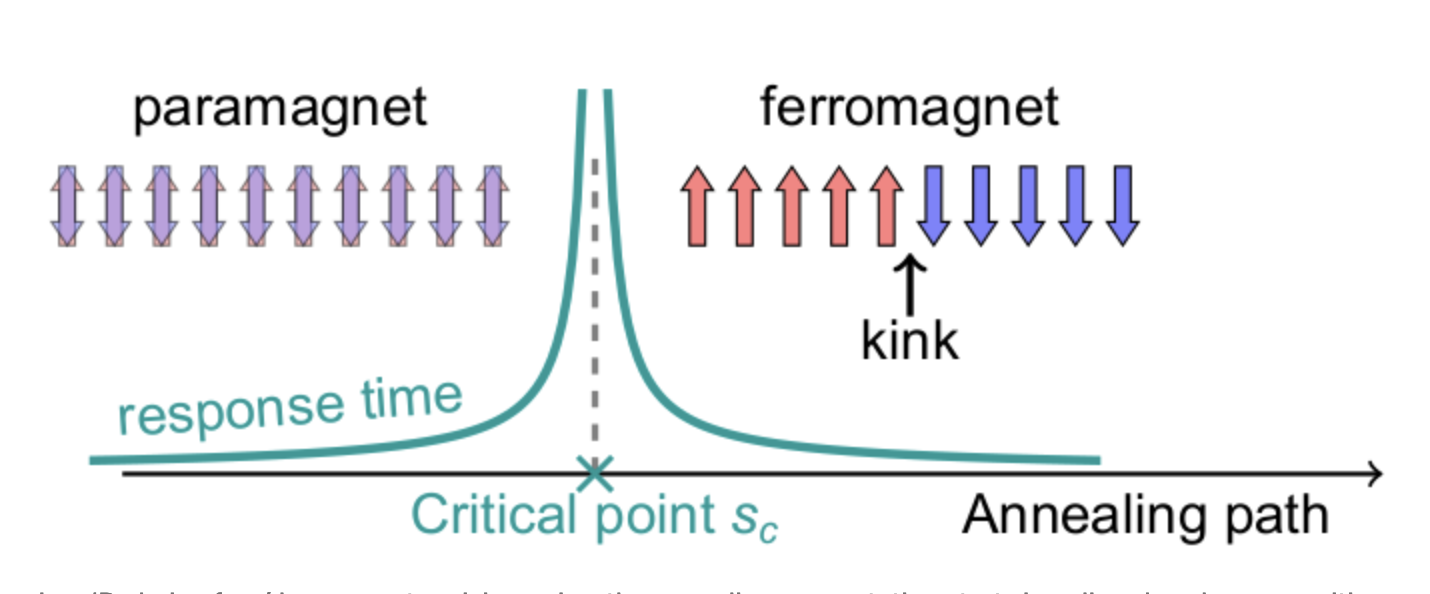Insider Brief
- D-Wave report on large-scale coherent quantum annealing in Nature Physics.
- Company claims the demonstration goes beyond the scale of any previous programmable quantum phase transition, opening the door to simulations of exotic phases of matter that would otherwise be intractable.
- Research paves “the way for scientifically understanding the properties of a wider range of quantum materials.”
PRESS RELEASE — D-Wave Quantum Inc. (NYSE: QBTS), a leader in quantum computing systems, software, and services—and the only provider building both annealing and gate-model quantum computers, today published a peer-reviewed milestone study of the first large-scale demonstration of coherent quantum annealing. The research exhibits, for the first time, dynamics of a quantum phase transition in a large-scale programmable quantum annealing processor using up to 2000 qubits in a D-Wave processor. This demonstration goes beyond the scale of any previous programmable quantum phase transition, opening the door to simulations of exotic phases of matter (unusual states of matter, outside of liquid, solid or gas, that make up the universe) that would otherwise be intractable.
The paper—a collaboration between scientists from D-Wave, the University of Southern California, the Tokyo Institute of Technology, and Saitama Medical University—entitled “Coherent quantum annealing in a programmable 2000-qubit Ising chain,” was published in the peer-reviewed journal Nature Physics today and is available here. The study shows that the fully programmable D-Wave quantum processor can be used as an accurate simulator of coherent quantum dynamics at large scales. This was demonstrated showing the patterns of “kinks” separating correlated spins in almost perfect agreement with exact analytical solutions of the famous Schrodinger equation for an ideal quantum system, completely isolated from outside noise. The density and spacing of kinks depend on, among other things, the speed and “quantumness” of the experiment. Measurements of single-qubit parameters were shown to accurately predict the behavior of systems from 8 to 2000 qubits, demonstrating high levels of control in quantum simulations at all scales.
“Essentially, these experiments measured the D-Wave processor against a very well-understood quantum yardstick,” said Dr. Andrew King, Director of Performance Research at D-Wave. “We found excellent agreement between theory and experiment, and that gives us a lot of confidence in our ability to manipulate programmable quantum systems, both for optimization applications and for exotic quantum simulations.”

“By examining quantum dynamics on a much shorter timescale than previously thought possible using D-Wave’s quantum annealers, this experiment demonstrates that these devices can operate without any discernible impact from the external environment. This opens the door to quantum simulations of models that are too large and complex to be simulated by any other means currently available,” said Daniel Lidar, Viterbi Professor of Engineering and Director of the USC Center for Quantum Information Science & Technology, University of Southern California.
“This paper paves the way toward practical quantum simulations of considerable scale unexplorable by other means including classical computations,” said Hidetoshi Nishimori, Professor, Institute of Innovative Research, Tokyo Institute of Technology.
“Coherence is the holy grail of quantum computing. By simulating a closed quantum system with no thermal effects at a large scale, we can glean invaluable insights into our processors’ computational power and thus increase the ability to find high quality solutions for our customers,” said Alan Baratz, CEO of D-Wave. “Ongoing advances in coherence times are an important priority for both our annealing and gate-model programs. The demonstration of large-scale coherence is another step towards demonstrating practical quantum advantage, and today’s research is a significant step towards that milestone.”
The significance of this achievement goes beyond the basic scientific aspect of understanding quantum phase transitions in one-dimensional matter. By establishing the technical basis for large-scale quantum simulations, it has paved the way for scientifically understanding the properties of a wider range of quantum materials.
Further, the scientific achievements presented in Nature Physics underpin D-Wave’s ongoing commitment to relentless scientific innovation and product delivery. To date, D-Wave has brought to market five generations of quantum computers and launched an experimental prototype of its sixth-generation machine, Advantage2, in June 2022. Announced in Fall of 2021 as part of the company’s Clarity roadmap, and scheduled to be available in 2023-2024, the full Advantage2 system is expected to feature 7,000+ qubits with a new qubit design, enabling 20-way connectivity between qubits in a new topology. The company also holds a broad portfolio of 200+ patents applicable to both annealing and gate-based quantum computing. And earlier this year, D-Wave opened the first Advantage™ quantum cloud service physically located in the United States, which is located at the USC-Lockheed Martin Quantum Computing Center (QCC) hosted at USC’s Information Sciences Institute (ISI), a unit of the University of Southern California’s prestigious Viterbi School of Engineering.
Read more about the research in our Medium post here.
About D-Wave Quantum Inc.
D-Wave is a leader in the development and delivery of quantum computing systems, software, and services, and is the world’s first commercial supplier of quantum computers—and the only company building both annealing quantum computers and gate-model quantum computers. Our mission is to unlock the power of quantum computing today to benefit business and society. We do this by delivering customer value with practical quantum applications for problems as diverse as logistics, artificial intelligence, materials sciences, drug discovery, scheduling, cybersecurity, fault detection, and financial modeling. D-Wave’s products are being used by some of the world’s most advanced organizations, including NEC Corporation, Volkswagen, DENSO, Lockheed Martin, Forschungszentrum Jülich, University of Southern California, and Los Alamos National Laboratory.
If you found this article to be informative, you can explore more current quantum news here, exclusives, interviews, and podcasts.

















